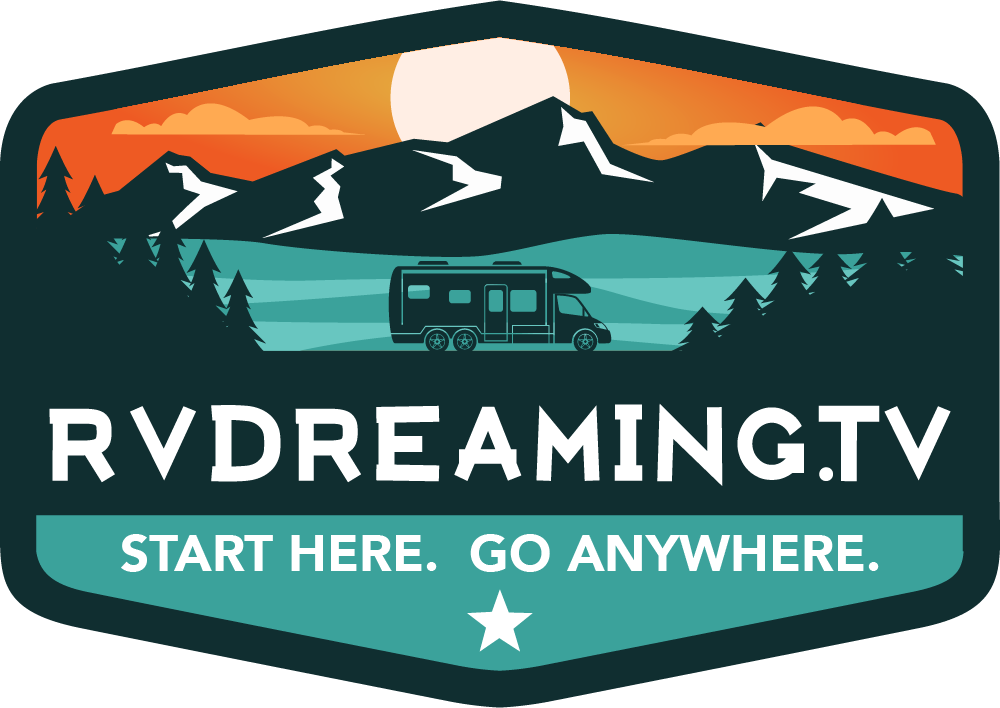
RV boondocking, also known as dry camping, is a popular activity among recreational vehicle enthusiasts. It involves camping in remote, rural areas without access to hookups for electricity, water, or sewage. This type of camping allows you to fully immerse yourself in nature and experience a true adventure.
Throughout this article, we talk a lot about the Leave No Trace Principles. Before we get into the best places for boondocking, let’s talk briefly about what it means to Leave No Trace.
Leave No Trace
Leave No Trace are principles designed to minimize the impact of outdoor recreation on the environment. These principles were developed by the Leave No Trace Center for Outdoor Ethics. LNT is a non-profit organization that promotes responsible outdoor recreation.
The seven Leave No Trace principles are:
- Plan ahead and prepare. This includes researching the area you will be visiting, being aware of local regulationsand packing appropriately.
- Travel and camp on durable surfaces. This means staying on established trails and campsites to minimize the impact on vegetation and soil.
- Dispose of waste properly. This includes packing out all trash, properly disposing of human waste, and following any guidelines for disposing of gray water.
- Leave what you find: This means not disturbing natural features or taking items from the natural environment.
- Minimize campfire impact. This means using a stove instead of a campfire whenever possible and following any fire restrictions in place. If a campfire is necessary, use established fire rings and extinguish the fire completely before leaving.
- Respect wildlife: This means observing wildlife from a distance, not feeding animals, and following any guidelines for interacting with wildlife.
- Be considerate of other visitors. This means respecting the rights of other outdoor enthusiasts and following any guidelines for group size and noise.
The Leave No Trace principles are designed to help protect the environment and ensure that outdoor spaces can be enjoyed by future generations. It is important to follow these principles when participating in outdoor activities such as RV boondocking.
Now, onto the list! There are many great places for RV boondocking across the United States. Here are some of the best:
Bureau of Land Management (BLM) Land
Bureau of Land Management (BLM) land is public land that is managed by the United States government. There are millions of acres of BLM land across the United States. Most of which is available for recreational activities such as camping, hiking, and boondocking.
BLM land is usually located in the western United States and offers a wide range of landscapes. Some think it’s just deserts, but you can also find mountains, forests, and grasslands. These are popular destination for RV boondocking due to the abundance of open space and the availability of dispersed camping areas.
Dispersed camping on BLM land is free and allows you to camp almost anywhere. Always be sure you follow local BLM guidelines, and check before you go. Guidelines are subject to change at any moment, and usually based on traffic, weather or other factors. There are also BLM Camping guidelines you need to follow. These guidelines include staying at least 100 feet away from water sources, and following any fire restrictions in place.
In addition to dispersed camping, some BLM land also has developed campgrounds with amenities such as pit toilets and trash bins. These campgrounds may require a fee.
Boondocking in National Forests
Similar to BLM Land, National forests are public lands managed by the United States Forest Service. National Forests are a part of the Department of Agriculture. There are 154 national forests in the United States, covering over 193 million acres of land. These forests offer a variety of landscapes, including mountains, forests, and grasslands. They are popular destinations for recreational activities such as camping, hiking, and boondocking.
In addition to dispersed camping, some national forests also have developed campgrounds. These campgrounds may have amenities such as pit toilets and trash bins. These campgrounds may require a fee.
State Parks
State parks are public lands managed by state governments and offer a variety of recreational activities. You can find camping, hiking, and boondocking at various parks. There are over 10,000 state parks in the United States, covering over 18 million acres of land. These parks offer a wide range of landscapes and are located in every state, making them a convenient option for RV boondocking.
Many state parks have designated camping areas for RVs and may offer amenities such as pit toilets, trash bins, and potable water. Some state parks may also have hookups for electricity, water, and sewage. State parks typically require a camping fee, but they are generally affordable and can be a good option if you want a more developed campsite.
When boondocking in a state park, it is important to follow the park’s guidelines and rules. This may include observing quiet hours, respecting the land and the environment, and following any fire restrictions in place.
Boondocking at Retail Stores
Some retail stores, such as Walmarts, Cabelas, and Cracker Barre, amay llow RVers to park in their lots overnight. This can be a convenient option if you are traveling and need a place to sleep for the night. It is important to check with the store before setting up camp and to be respectful of the property.
It is important to check with the store before setting up camp and to follow any guidelines they may have. Some stores may have specific areas designated for overnight parking, while others may have a general policy that allows overnight parking.
While boondocking in retail store parking lots can be a convenient option, it is important to note that these types of locations are not designed for long-term camping. It is generally accepted to stay for one night only, and it is important to move on to a more suitable location after that.
Private Land
Private land can be a great option for RV boondocking if you are able to obtain permission from the landowner. Some private landowners allow RVers to park on their property for a fee, which can provide a more secluded and private camping experience.
One way to find private land for RV boondocking is through the Boondockers Welcome app. This app connects RVers with hosts who offer a spot on their property for boondocking. Hosts can be found all over the United States and Canada and offer a variety of landscapes and amenities.
When boondocking on private land, it is important to follow the landowner’s guidelines and rules. This may include observing quiet hours, respecting the land and the environment, and following any fire restrictions in place. It is also important to leave the property as you found it and to follow the Leave No Trace principles.
More Boondocking Tips
When RV boondocking, it is important to be self-sufficient and prepared. This means having a reliable source of power, such as a solar panel or generator, and enough water and supplies to last for the duration of your trip. It is also important to follow the Leave No Trace principles and respect the land and the environment.
Overall, RV boondocking is a great way to experience the beauty of nature and have an adventure. Whether you choose to camp on public land, in a state park, or on private property, there are many great places for RV boondocking across the United States. With a little planning and preparation, you can have an enjoyable and memorable trip.

















Trackbacks/Pingbacks